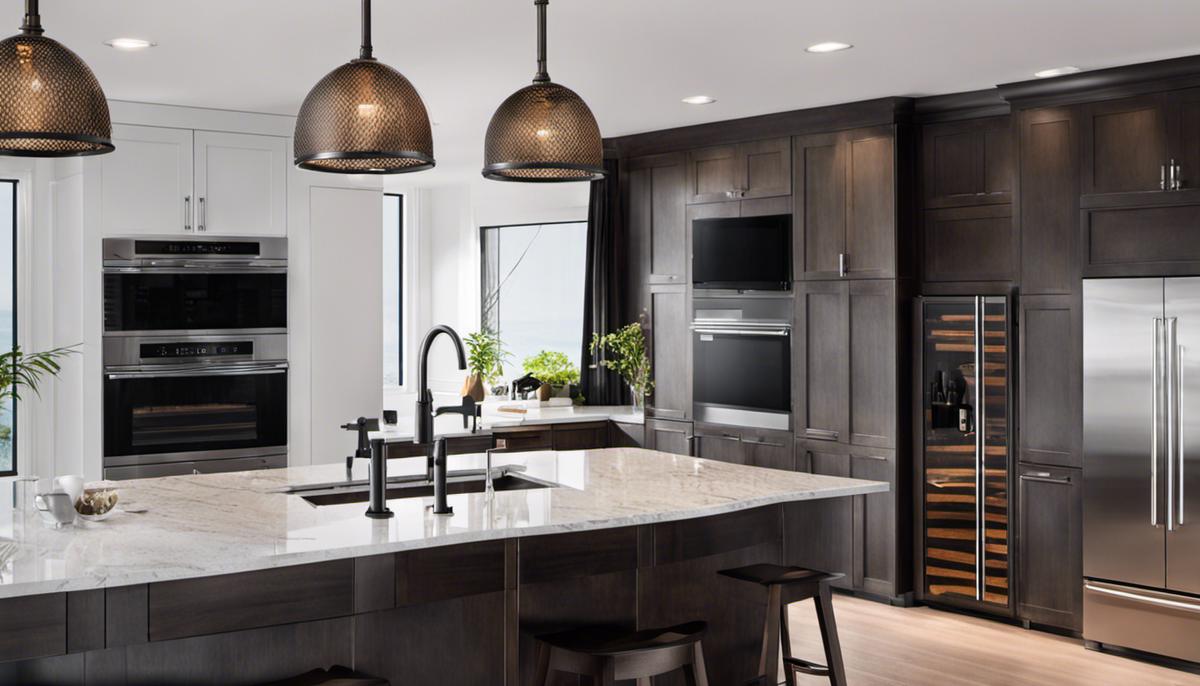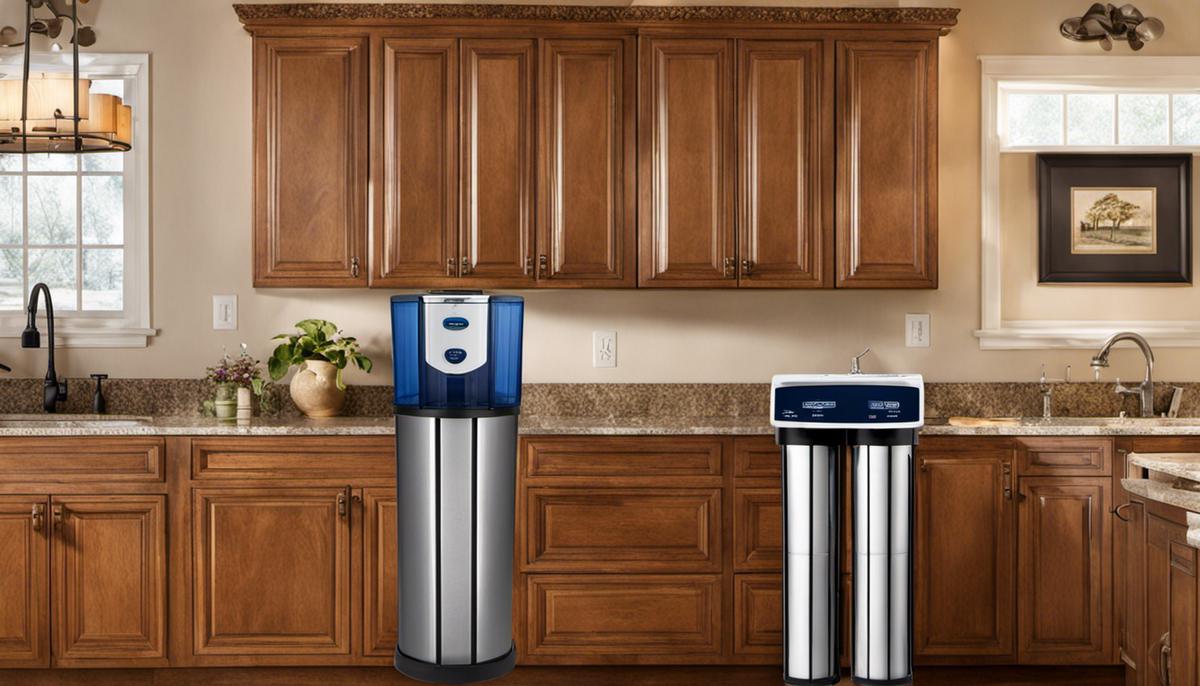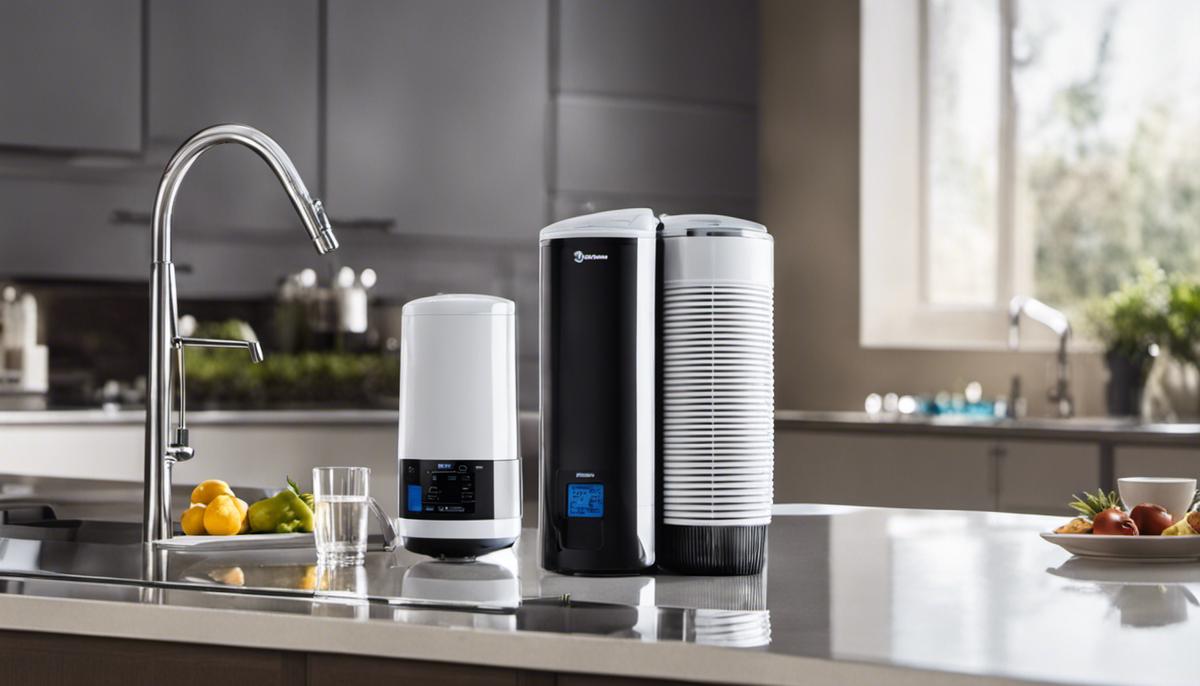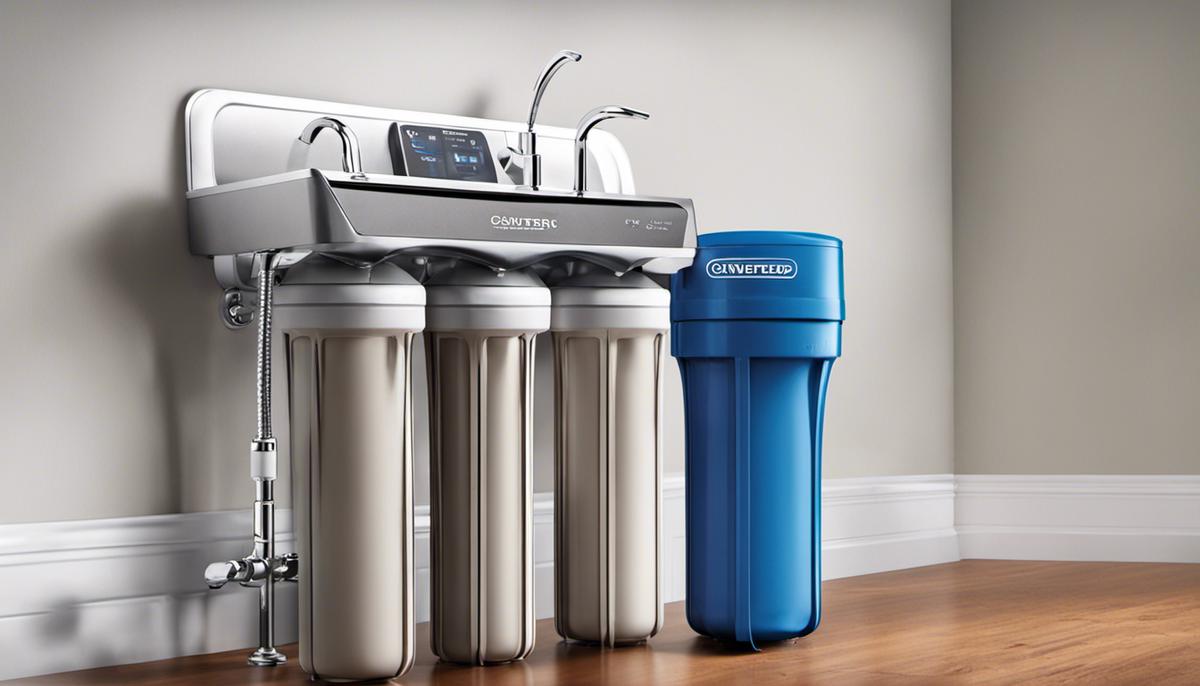The modern world thrives on technology – a notion evidenced not only by our reliance on smartphones and Internet-of-Things devices but also by the emergence of advanced water purification technologies. From the devices that fit snugly beneath our kitchen sinks to those serving our entire homes, the water filtration industry has seen a dramatic evolution in recent years. This review aims to present a comprehensive, unbiased dissection of both whole house and under sink water filters. We’ll delve into the nuances of their technology, evaluate their effectiveness and efficiency, analyze the costs and maintenance involved, and weigh up their environmental impact and sustainability.
Table of Contents
Technology Behind Water Filters
Technology has always been at the forefront of tackling global challenges, and providing clean, safe water is no different. The rise in popularity of water filters at the household level has led to the development of innovative solutions that leverage the latest tech trends. The most popular of these are whole house and under sink water filters, each having distinct features catering to different needs.
A complete home water filtration system or whole house water filter serves as your home’s primary purification system. This unique water filtration system leverages municipal authorities’ distribution channels to filter water to the entire house. A great stride in this field is the implementation of smart technologies that allow for self-monitoring, alerts, and even system operation data via mobile apps. Whole house water filters are now IoT (Internet of Things) enabled, leading to efficient usage and maintenance.
These advanced filters often incorporate cutting-edge nanofiltration and reverse osmosis technologies that eliminate 98% of dissolved inorganic solids. With the addition of AI, homeowners receive real-time notifications about filter changes and system repairs. Neural networks are even used to predict filter lifespan based on usage patterns and water quality.
On the other hand, under sink water filters are perfect for those who want to filter cooking and drinking water without the need for an extensive system. These point-of-use systems utilize similar technology trends but are typically more compact. These filters often integrate the use of activated carbon and reverse osmosis filters, meticulously designed to eradicate contaminants like lead, PFAS, chlorine, and cysts from the water.
Some under sink water filters even incorporate UV-C technology. This game-breaking application eradicates 99.99% of viruses and bacteria, ensuring your water is free from harmful pathogens. High-end under sink filters are accompanied by mobile apps that provide filter life monitoring, water consumption tracking, and remote cartridge ordering – the epitome of smart living.
It’s also worth mentioning that under sink filters can be customized according to water usage and specific filtration needs. Some brands offer filter attachments that target specific problematic contaminants typical in certain regions.
As homes become smarter and consumer health consciousness increases, the evolution of these water filtration systems is a trend worth noting. Embracing these technologies offers an effective way of ensuring access to clean, safe water. While both are effective solutions, remember that the choice between whole house and under sink largely depends on individual household needs and the quality of municipal water supply. Whether large or small, any step towards cleaner, safer water is a step in the right direction.
The tech world continues to innovate, and each new trend represents an opportunity to unlock greater convenience and forthright health benefits. Watch this space closely; you never know what life-altering solution is next in line!

Effectiveness and Efficiency
Tech Advancements: Whole House vs. Under Sink Water Filters
The continual technological advancements in water filtration systems have led us to a critical juncture – choosing between the widely celebrated whole house water filters and the under sink variants. Two powerful alternatives – each harness technology differently and provide unique advantages. When it comes to deciding which is more efficient and effective, the focus shifts to detailed performance data and further tech dimensions.
Technology lovers celebrate the deployment of advanced filtration principles and intelligent systems across both formats, but the question is: which one wins the tech battle? Casting aside personal preferences or water quality considerations, let’s dive into the objective lens of a tech enthusiast, scrutinizing factors that determine which technology is on the cutting edge.
Efficiency is a key criterion in tech evaluations. With whole house water filters, every water outlet in the home provides filtered water, an ultimate convenience. On the flip side, this process leads to the use of filtered water for all purposes, including ones where it’s not strictly necessary, like toilet flushes and outdoor faucets, hence arguably wasteful.
On the contrary, under sink water filters are renowned as targeted filtration solutions, operating only where necessary: directly under the sink. This makes them incredibly efficient as they conserve lifecycle and limit costs.
Comparing operational efficacy, both filters integrate smart technology but tend to it differently. While whole house filters offer real-time notifications, performance alerts and even predictive maintenance via AI, their under sink counterparts boast UV-C technology to eliminate waterborne pathogens and mobile apps for seamless filter replacement orders.
Such advancements highlight the technological potential these water filters now possess. On the performance front, the whole house filters are more comprehensive with nanofiltration and reverse osmosis technology providing homeland joys of uncontaminated water. However, they may fall short in completely eliminating water-soluble volatile organic compounds.
Under sink filters are effective for high-quality drinking and cooking water, utilizing reverse osmosis and activated carbon to reduce a broader range of contaminants, including volatile organic compounds. Conversely, their reach is restricted to one point of use and not the entire home.
From water purification to saving costs and environment, AI to UV, whole house and under sink filters employ technology advancements for their own strengths and address specific needs.
Although data-led performance analysis draws the battle, there’s an apparent draw with both systems championing their realms – whole house providing advanced, expansive filtration while under sink filters champion targeted, holistic purification. The consequential tech impact lies not in universal superiority but in matching specific household needs with evolved technology, reinforcing that the best tech is indeed the one that serves you best.

Cost and Maintenance Analysis
Once the decision has been made to adopt a water filtration system at home, a careful cost assessment becomes paramount. Given the various options available – especially, the choice between whole-house filters and under-sink filters – it’s crucial to understand the economic differences and the impact on household budget.
From a standpoint of initial investment, whole house water filters generally require a larger upfront cost compared to under-sink filters. These systems are comprehensive, designed to purify the water entering the entire home, hence the higher price tag. Additionally, installment costs for whole-house filters tend to be higher since a professional plumber is usually mandated for the job.
Under-sink filters, on the other hand, are a more budget-friendly option. These filters are targeted at a single point of use, making their initial and installation costs significantly lower. These under-sink filters often come with DIY installation kits that many tech enthusiasts find engaging, and indeed, cost-effective.
Nonetheless, evaluating total cost based solely on initial purchase and installation can be misleading. The cost-effectiveness of a water filtration system isn’t simply a one-off calculation; it should account for ongoing costs over the lifespan of the system, like filter replacements, maintenance, and energy usage.
Whole house water filters, while having a more expensive initial outlay, often prove economical in the long run. Given their large-scale operation, these systems use long-lasting filter cartridges that need less frequent replacements. Plus, their proprietary technology often supports lower energy consumption, and some advanced models even offer predictive maintenance features, lowering the risk of unexpected repair costs.
Under-sink filters, despite their budget-friendly nature, can incur higher ongoing costs. Given their smaller size, the filters are required to be replaced more frequently, inevitably increasing the cost over time. Additionally, certain models may require pricier proprietary filters.
Crucially, the water quality in your area will drastically affect the cost-effectiveness of your filter. Locations with heavily contaminated water may require more expensive filters or more frequent replacements, impacting the overall economy of the system. Hence, it’s vital to test your water quality prior to making a decision.
To conclude, choosing between a whole-house and under-sink water filter strictly from an economical standpoint necessitates careful evaluation of both initial and ongoing costs. It’s equally important to consider locality-specific factors like water quality. In essence, the most cost-effective choice will be one that combines economic feasibility with the necessary filtration capabilities to ensure safe and clean water for the household.
Innovation, as ever, continues to play a crucial role in the development of more sustainable and cost-effective water filtration technologies. As our homes get smarter, even under the kitchen sink, quality of life improves. The ability to make informed, personalized decisions about water filtration allows us to harness technology to better our everyday lives, both practically and economically.

Environmental Impact and Sustainability
Plunging into the realm of sustainability and environmental impact, let’s delve into whether whole house water filters or under sink water filters take the crown. Both these smart options offer varying ecological and economic benefits. However, distinct differences lend them varied environmental footprints.
Firstly, in the eco-conscious context, whole house water filters certainly step up to the plate. These systems filter all incoming water, reducing the presence of pollutants from all water outlets – showers, faucets, washing machines, and more. This protects the environment by reducing the amount of toxins returning to the sewage system and to the water treatment plants. Also, the centralized system ensures less energy is consumed per unit of water filtered, compared to separate under sink systems for each outlet. Moreover, they reduce the need for bottled water, curbing plastic waste significantly.
Yet, under sink filters can claim their sustainable merits as well. Often used to filter drinking water, these localized systems tackle contaminants affecting the taste and healthfulness of water. Given their smaller size, under sink filters often have lower manufacturing and transportation impacts compared to whole-house systems. Furthermore, these filters primarily target drinking and cooking water, prioritizing filtration where it matters most and saving energy in the grand scheme of things.
In terms of waste production, a comprehensive look at the life cycle of both systems is necessary. Whole house filters typically use larger, longer-lasting filters, diminishing the frequency of replacements and cutting down on filter waste. Comparatively, under sink filters, while requiring more regular changes, exhibit lower raw material usage due to their compact design.
In a nutshell, the choice between whole house and under sink filters from a sustainability perspective is not cut and dry. The scale somewhat tilts in favor of whole house filters due to less energy per water unit, reduced plastic waste, and fewer filter changes. Nevertheless, under-sink filters fare strong points for their smaller production and transportation footprints and focused filtration reducing overall energy usage. Therefore, the ultimate decision falls back to the specific needs, water quality, and local environmental regulations of the household.
The tech industry’s ongoing striving for greener and smarter filtration solutions ensures the sustainability bar of these systems only moves upward. With every tech leap, water filtration is becoming more compact, efficient, and sustainable, making a significant stride towards our global environment conservation goals. A case in point is the recent development of filters with longer lifespans and greater pathogen filtering capabilities, reducing both waste creation and the spread of waterborne diseases.
The decision between whole house and under sink filters is a tale of scales. It’s about weighing the individual household needs, water quality, and environmental consciousness against each other. In this story, technology is a pivotal character driving growth, fostering sustainability, and upping the ante in the fight against pressing global water issues.

After a rigorous and judicious exploration of the subject matter, it becomes clear that both whole house and under sink filters have distinguishable strengths and weaknesses. Selecting the right one boils down to the individual needs and circumstances of a household, given the differences laying in their range of filtration, integration ability with home automation systems, costs, maintenance requirements, and environmental footprints. As consumers, understanding these decisive factors offers a clear path towards making an informed choice in our pursuit of clean, healthy water for our households and contributing our bit towards a sustainable future.

Matt Smith is a seasoned journalist and author whose expertise spans across the dynamic realms of Politics, Gadgets, Gaming, and a plethora of general interest topics. With a Master’s in Political science and tech pedigree shaped in Silicon Valley, Matt brings a wealth of knowledge and a critical eye to everything he writes.
Politics: Matt offers sharp political commentary, drawing from his experience as a political analyst and his academic rigor.
Gadgets: His tech insights are grounded in real-world experience, having been on the front lines of innovation with a degree from Caltech.
Gaming: A respected voice in gaming, Matt’s reviews and trend analyses are a testament to his deep involvement in the gaming community.
General Topics: From science to culture, Matt’s writing spans a broad spectrum, engaging readers with a blend of expertise and relatable prose.
Engage with Matt’s compelling content for a fresh perspective on the issues at the forefront of today’s discourse.

